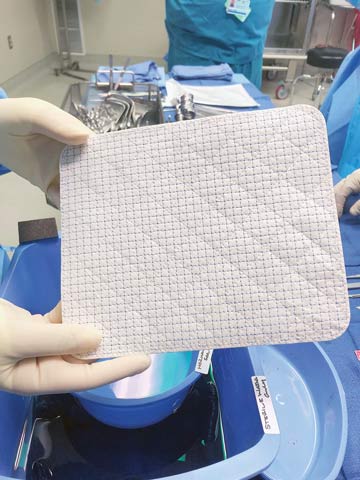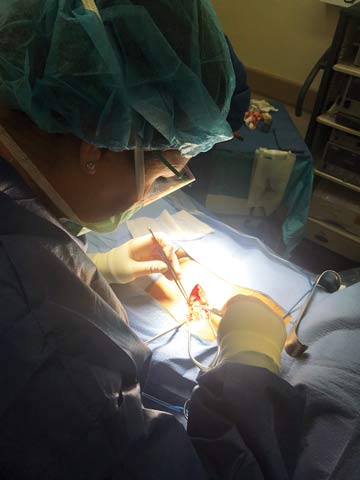Good luck trying to figure out which hernia mesh is best. "There are just so many different options out there," says Jeffrey Blatnik, MD, FACS, an assistant professor of surgery at Washington University School of Medicine in St. Louis (Mo.). "That makes it difficult to keep up with some of the latest trends because every 6 months, a new product emerges."
Mesh has also become very specialized, points out Shirin Towfigh, MD, FACS, a hernia specialist at Beverly Hills (Calif.) Hernia Center. "There are different meshes for laparoscopic surgery versus open surgery, for inguinal hernias versus ventral or abdominal wall hernias, and companies within their own line of items have different styles and types," she says.
To help you make sense of the options, we asked some of the country's leading hernia experts about the different types and features of mesh, and what you should consider when deciding which type to stock in your facility.
- Mesh type. There are 3 basic types available: permanent synthetic, biologic and hybrid.
Permanent synthetic is the most commonly used. It's been around the longest and is the least costly option, ranging from $40 to $100 depending on your contract with the vendor. Dr. Blatnik says it's especially useful in outpatient facilities, "which are more commonly repairing smaller inguinal and umbilical hernias, in comparison to much more complex procedures done in a hospital setting." As its name implies, permanent synthetic mesh doesn't absorb into the tissue. It's there for life.
At the other cost extreme is biologic mesh, typically made of porcine or bovine materials. This mesh completely absorbs into the body over time. Dr. Blatnik says biologic mesh was once commonly used to repair large incisional hernias, but it can cost thousands of dollars just for a single piece. "It's fallen out of favor to a certain extent due to cost constraints," he adds. "It's not the holy grail of meshes that people initially thought it was going to be."
Hybrid mesh falls in between on the cost spectrum. Dr. Blatnik calls these biosynthetic meshes, or absorbable synthetic meshes. He says that while permanent synthetic is like a window screen, and biologic like a solid sheet, hybrid is typically made from chemical polymers and designed with a more mesh-like characteristic reminiscent of the permanent synthetic surgeons know well.
Like biologic mesh, hybrid absorbs over time. "Biosynthetic is the new, up-and-coming mesh because it alleviates the need for permanent synthetic mesh," says Dr. Blatnik. "There's a lot of interest among surgeons to see how this will fill that void with patients who aren't great candidates for permanent synthetic mesh, either because of their comorbidities or other characteristics that put them at high risk for infection, or for patients who desire not to have permanent mesh implanted."
.svg?sfvrsn=be606e78_3)


.svg?sfvrsn=56b2f850_5)